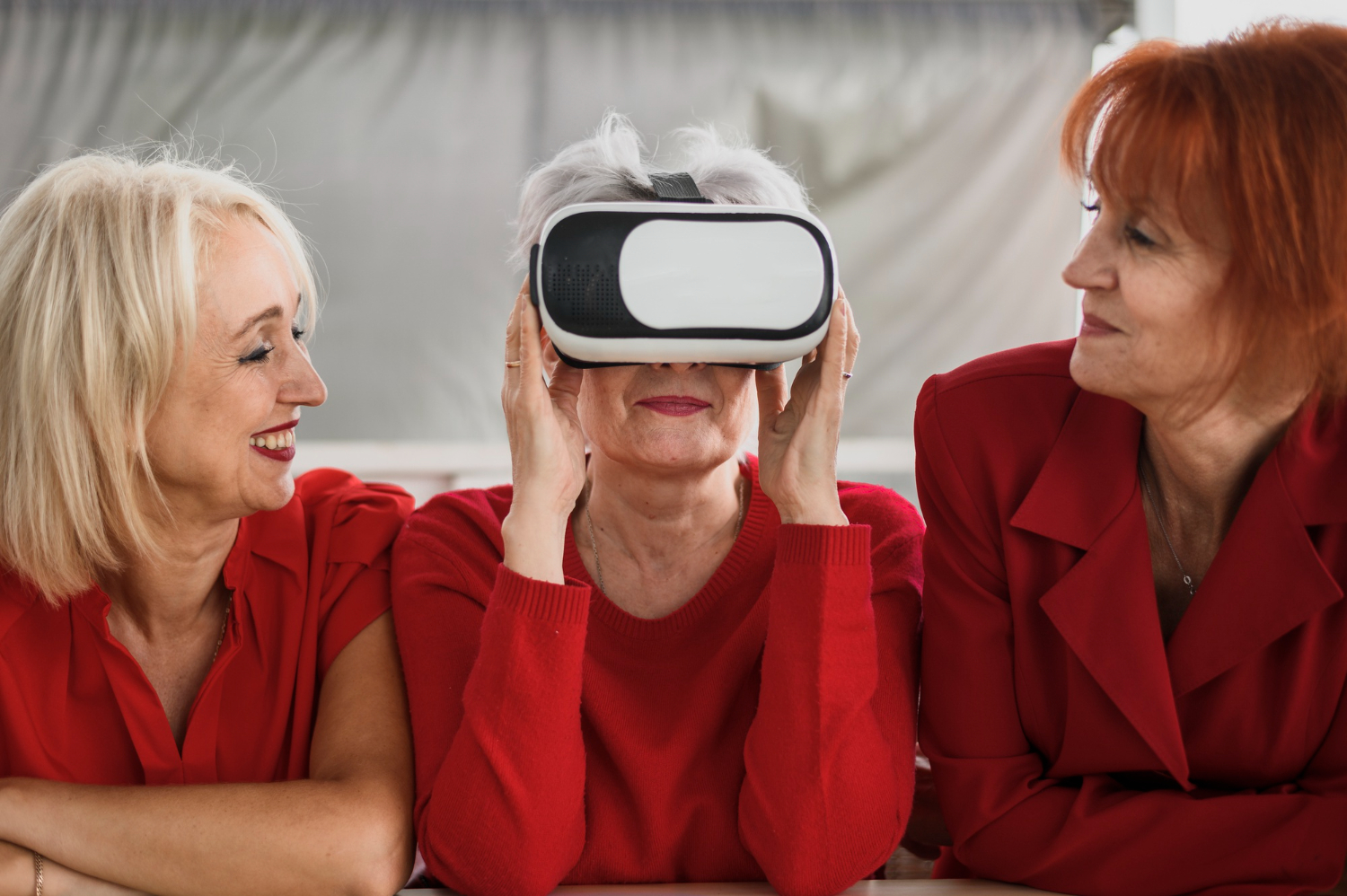The modeling industry has always reflected the cultural pulse of the times, but no transformation has been as rapid or all-encompassing as the one brought on by the digital age. What was once a career centered on exclusive castings, runway shows, and glossy magazine spreads is now heavily influenced by algorithms, hashtags, smartphones, and a global audience. The traditional path to becoming a model has splintered into multiple lanes, some paved by agencies and others built by influencers, content creators, and self-managed digital portfolios.
This shift has created both unprecedented opportunities and new challenges. As someone navigating or entering the modeling world, understanding the evolution of modeling in the digital age can help you remain relevant, adaptable, and successful in a rapidly changing industry.
From Gatekeepers to Global Access
Before the internet, modeling was a tightly controlled industry. Gatekeepers, agents, scouts, fashion editors, and casting directors, held the keys to exposure. You had to be discovered in person, often in large cities, and modeling opportunities were limited by geography, agency relationships, and access to high-end photographers.
Now, the internet has flattened these barriers. A model in Nairobi, Stockholm, or Buenos Aires can gain global recognition with a single viral post. Social media has become the new casting call, and models are more empowered than ever to create their own platforms. Scouting still exists, but agencies are now actively searching Instagram and TikTok, rather than solely relying on street scouting or walk-ins.
The Rise of the Influencer Model
Perhaps the most visible change in modern modeling is the rise of the influencer model. In the past, a model’s value was determined by agency representation and brand campaigns. Today, it’s just as likely to be measured by engagement rate and follower count. Brands are eager to work with individuals who have built authentic relationships with audiences, and influencer-models bring built-in marketing potential to any collaboration.
Unlike traditional models who often played a passive role, influencer models are content creators. They have creative control, build personal brands, and maintain direct contact with their fans. This new model archetype requires not only camera readiness but also storytelling skills, consistency, and an understanding of content trends.
Social Media as a Modeling Portfolio
Models once had to carry physical comp cards and printed portfolios to castings. These days, a model’s Instagram feed can double as a portfolio. Platforms like Instagram allow you to showcase everything from editorial shoots to behind-the-scenes moments, travel content, skincare routines, and day-in-the-life videos.
Your feed becomes a living, breathing narrative of who you are and what you can bring to a brand. High-resolution, curated posts give a sense of professionalism, while Stories, Reels, and TikToks offer a glimpse into your personality, energy, and versatility. Knowing how to balance polished content with authenticity can help you connect more meaningfully with audiences and clients alike.
Virtual Castings and Digital Comp Cards
With the expansion of remote work and global collaborations, virtual castings have become the norm. Instead of flying to another city for a go-see, you may be asked to send a self-tape, join a Zoom interview, or submit updated digital comp cards. These cards are now often designed and distributed online using platforms like ModelManagement.com or direct email to clients.
This digital-first environment requires you to stay camera-ready and maintain up-to-date images and videos that capture your current look. It also places a premium on tech-savviness, knowing how to shoot in natural light, edit clips, and format PDFs can make you stand out in a crowded digital field.
Representation in the Age of Online Agencies
Traditional modeling agencies still play a central role in a model’s career, but their dominance is no longer absolute. Digital platforms like The Lions, IMG’s digital board, and freelance-focused sites such as Freelance Model Network or even Fiverr have opened the door for independent models to book jobs without agency backing.
Online model directories allow you to create a profile, upload your work, set your availability, and communicate directly with brands. While there are scams to watch out for, vetted digital platforms have democratized access to gigs and enabled models to have more control over their schedules and fees.
Embracing Diversity and Authenticity
One of the most positive outcomes of modeling’s digital transformation is the increased demand for diversity. The old standards of beauty, tall, thin, Eurocentric, have been challenged by the inclusive ethos of digital culture. Brands are now looking for models who represent a wider range of ethnicities, body types, gender identities, abilities, and ages.
Social media has fueled this shift. Consumers want to see themselves reflected in the campaigns they interact with, and outspoken communities online hold brands accountable when their representation falls short. As a result, there are more modeling opportunities now for people who may have been overlooked in the past.
Technology’s Role in Fashion and Modeling
Technology’s influence on modeling isn’t limited to platforms and reach. It has seeped into how images are created, edited, and shared. Augmented reality (AR) and virtual reality (VR) are increasingly used in fashion shows, photo shoots, and product demos. Virtual models like Shudu and Lil Miquela have challenged the definition of what a model even is.
While some fear that AI and digital avatars might displace human models, many brands are integrating both real and virtual figures to enhance storytelling. The key takeaway is this: adaptability to new technologies will be crucial. Learning how to pose for green screens, interact with 3D visuals, or model virtual fashion collections may become part of the modern model’s skillset.
Building a Personal Brand
In the digital age, every model is also a brand. From the colors you wear to the captions you write, everything contributes to your public image. Consistency across platforms builds recognition and trust. Whether your aesthetic is clean and minimal, bold and edgy, or natural and relaxed, your online presence should reflect it.
More than ever, clients want models with an identity, someone who brings personality and values to the table, not just physical beauty. Building a personal brand involves curating your image, engaging with your audience, sharing your experiences, and staying true to your core message.
The Hustle of Content Creation
Many digital models are also photographers, editors, stylists, and directors. Content creation is part of the job, and successful models often have a plan for their social media calendar, brand partnerships, and audience growth. They understand trends, optimize posting times, and know how to present products in a way that feels organic.
This hustle requires discipline and creativity. Planning content in advance, learning basic editing tools like Lightroom or VSCO, and understanding analytics can significantly improve your digital visibility and collaboration opportunities.
Managing Online Pressure and Mental Health
Of course, the digital world isn’t without its drawbacks. Constant exposure, comparisons, online criticism, and pressure to always be camera-ready can affect mental health. Models today face the challenge of maintaining authenticity while also managing expectations and maintaining boundaries online.
It’s essential to take breaks from the screen, focus on real-world relationships, and prioritize your well-being. Surround yourself with a supportive community, unfollow accounts that make you feel inadequate, and engage in hobbies that ground you. Your mental resilience is just as important as your physical presentation.
Training for the Digital World
Many modeling schools and workshops now incorporate digital training alongside traditional techniques. Classes on building your brand, navigating online castings, and mastering self-shooting techniques are becoming common. If you’re just starting out, look for programs that address both in-person and digital modeling skills.
You might also consider investing in basic gear: a good ring light, smartphone tripod, editing software, and a simple home backdrop can elevate the quality of your self-tapes and social content. Think of your space not only as a living area but as a mini production studio.
Opportunities for Niche Modeling
In the digital age, there’s room for everyone. Petite models, tattooed models, fitness models, mature models, alternative models, there’s demand for all kinds of looks and niches. You don’t need to fit a single mold. If you can find your tribe and target market, you can build a successful modeling career in your unique lane.
Specialized content, niche hashtags, and community engagement can help you connect with like-minded audiences and brands. Whether your strength is beauty tutorials, cosplay modeling, or sustainable fashion shoots, the internet makes it possible to own your space.
Preparing for the Future
As modeling continues to evolve, staying informed will help you stay ahead. Subscribe to fashion and modeling newsletters, follow modeling agency trends, and stay connected to what’s happening in tech and culture. Digital literacy, flexibility, and lifelong learning are the new superpowers.
The digital age has reshaped modeling into something more dynamic, accessible, and multi-dimensional than ever before. It’s no longer just about how you look, it’s about how you connect, communicate, and create.
Conclusion
The evolution of modeling in the digital age has transformed the industry from one of exclusivity and gatekeeping into a dynamic, democratized, and often self-driven profession. Models today must be more than just photogenic, they must be creators, entrepreneurs, and strategists. Whether you’re just starting out or have been modeling for years, embracing the digital tools and trends shaping today’s fashion landscape is essential to thriving in the modern world of modeling.
Let your camera be your stage, your profile be your portfolio, and your story be your power. Modeling is no longer confined to runways and magazine pages. It lives in the palm of your hand, and the future is yours to shape.

